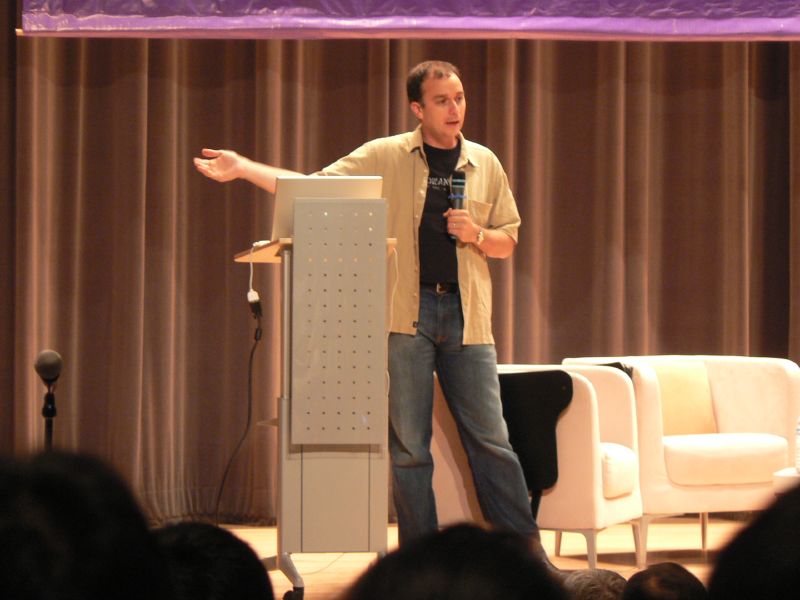
Nat Torkington doing his 2.0-ish thang
At the recent Nexus 2007, Nathan Torkington, crowd favourite and Perl guru from O'Reilly Media, spoke about Disruption, Change, and Opportunity. In case you do not know, its founder Tim O' Reilly coined the term Web 2.0 and have been in the business of technology trendspotting for quite a number of years. Nat cited key developments in the technology landscape over the decades:
1988 - X Windows Documentation
1992 - Internet
1998 - Open Source (or not invented by Microsoft)
2004 - Web 2.0
2005 - Make
Nat later expounded about the Web 2.0 movement and what it all boils down to. In a nutshell, it is all about:
1) Applications moving to the web.
2) The evolution of richer interfaces.
3) Letting people accessing their data.
4) Anything with an internet connection.
5) Continuous improvement.
6) Analyzing everyone's data - eg Amazon.
Towards the end, I learnt about how the advent of open-source languages like PHP, Perl and Java are sounding the death knell for the client-server age. Its interesting to see how web-based applications are increasingly reducing our reliance on computer-based software and applications. This movement has also led to a greater democratisation of information, which is the basis on which much of the blogosphere is founded on.
The session ended with a couple of quotable quotes. The most apt is probably this one by sci-fi novelist William Gibson:
"The future is here, it's just not evenly distributed."
In the world of citizen-centric media, the web 2.0 movement is probably the most quoted and referred. It is the foundation on which a whole suite of online tools and resources - wikipedia, flickr, youtube, digg, del.icio.us, odeo, blogging softwares - are founded. It heralded a new age which makes the whole experience of online content creation, sharing, interaction and networking that much easier.
In a way, it returned power to the people and allowed everybody to be a "prosumer" - both creating and consuming content in an easy way while taking networking and peer-to-peer communication to new heights.Labels: Nat Torkington, Nexus 2007, O'Reilly, web 2.0
